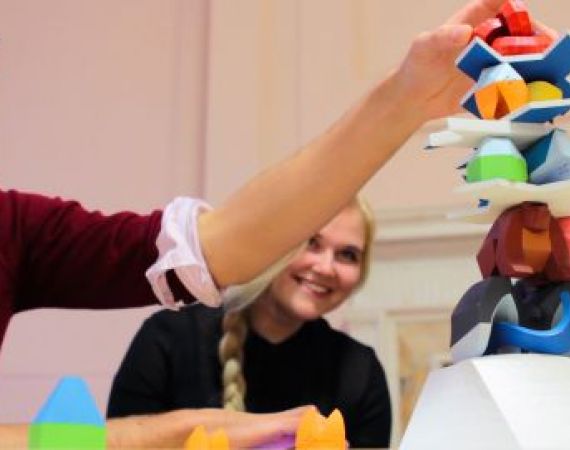Lunchtime talk write-up
Posted on Mon 8 Feb 2016
Fabulous Beasts: The amazing physical-digital-connected-party-stacking-game from Sandbox to Kickstarter
Alex Fleetwood joined us to talk about the design and development process of Fabulous Beasts, a physical/digital connected game where players build a tower and build a world.

Fabulous Beasts
Alex Fleetwood joined us to talk about the design and development process of Fabulous Beasts, a game where players take on the role of gods, creating an eco-system in a physical and digital stacking game. Fabulous Beasts is made by games company Sensible Object. Here are five things I learned about games and beasts:
- In the current gaming climate, money is being poured into hardware design and development, with the assumption that games to inhabit the new technology will be designed after-the-fact. Alex is interested in discovering the human-centred use for technological development early on. How do we relate new technology to social use?
- The design process for Fabulous Beats was iterative. The team would develop rapid prototypes, playtest them, and make up the rules as they went along. Participating in REACT’s Play Sandbox enabled resources for iterative development, and working with the young coaches (children aged 8-12) to playtest the game early on helped to shape the development of Fabulous Beasts.
- Sensible Object had to confront the design challenge of genuinely integrating two systems, so that players are making choices and interacting seamlessly across the physical and digital platforms.
- After much iteration, Sensible Object has arrived at a game design system driven by RFID tags in each 3D printed artefact. The players stack the pieces on an electronic weight-sensing platform with an RFID reader, and the world of beasts is represented through colourful animations on a tablet or smartphone. The cooperative nature of the game makes the transition of spectator to player easy and enjoyable.
- Sensible Object is currently running a Kickstarter campaign, with the aim of bringing Fabulous Beasts to the market towards the end of 2016. You can read more about the development of Fabulous Beasts in a news post by Clare Reddington (Watershed’s Creative Director).